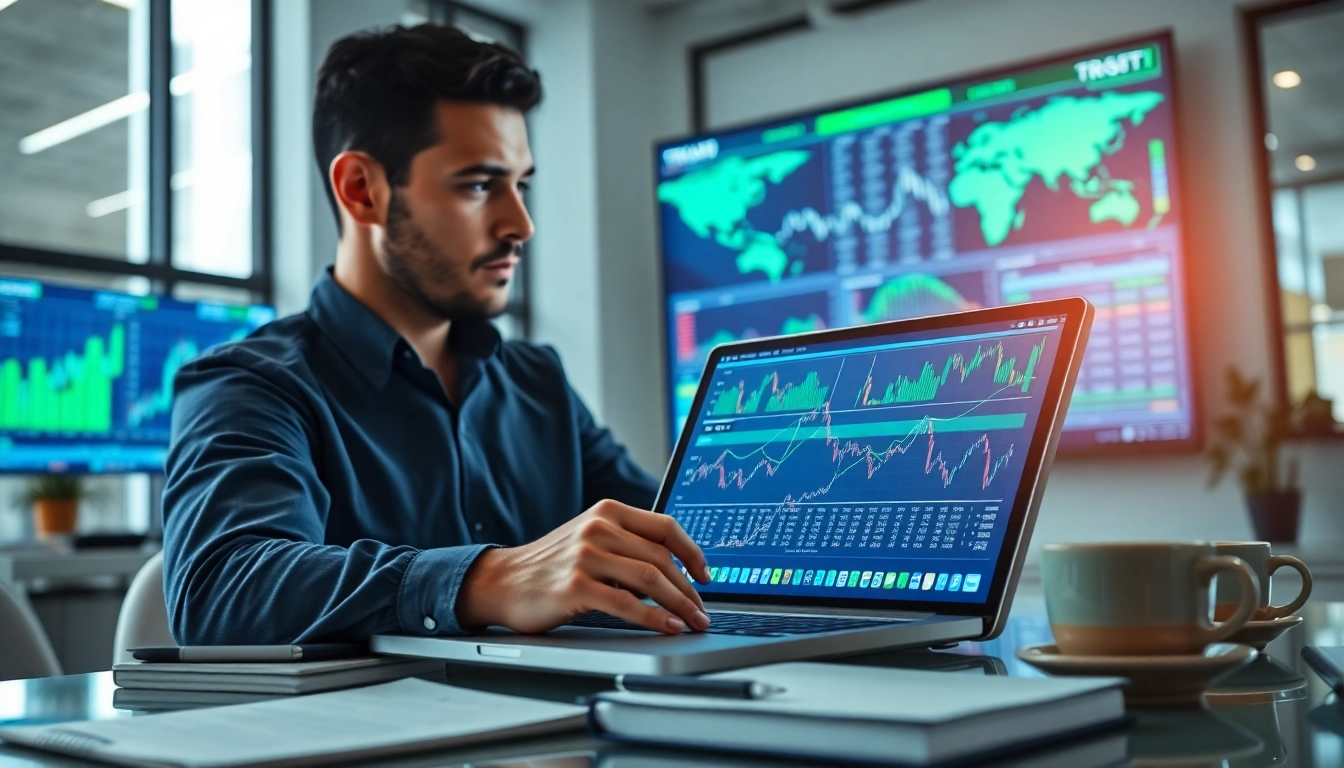
Understanding Trade Futures
In the intricate world of finance, trade futures represent a crucial mechanism for traders and investors. They provide a means to hedge risk, speculate on price movements, and manage portfolio exposure in volatile markets. As global markets evolve, understanding trade futures becomes essential for anyone looking to navigate the complexities of financial investments effectively. This article delves into trade futures, covering their importance, the mechanics behind them, strategies for success, and the challenges traders may encounter.
What Are Trade Futures?
Trade futures are legally binding agreements to buy or sell an asset at a predetermined price on a specified future date. These contracts are traded on regulated exchanges and span various commodities, currencies, and financial instruments. The core idea is that traders can lock in prices, allowing them to mitigate the risks associated with price fluctuations. This mechanism is especially useful for businesses reliant on purchasing raw materials, as well as for investors aiming to capitalize on price changes in the market.
The Importance of Trade Futures in Global Markets
The significance of trade futures extends beyond individual contracts; they play a vital role in the global economy. Firstly, they provide a platform for price discovery, enabling market participants to gauge the value of assets based on projected future conditions. Additionally, futures markets contribute to liquidity—allowing traders to enter and exit positions without drastically affecting market prices. This liquidity facilitates hedging strategies, where businesses can protect themselves against unfavorable movements in commodity prices or foreign exchange rates.
How Trade Futures Differ from Other Trading Instruments
While futures contracts share similarities with other trading instruments, such as options and spot trading, they have distinct characteristics. Unlike spot contracts, which require immediate delivery and payment, futures contracts stipulate deferred settlements. Additionally, options provide the right—rather than an obligation—to buy or sell, while futures contracts involve a mandatory agreement. This obligation means that traders must be aware of the potential outcomes and the necessity of managing their risk effectively.
Key Concepts in Trade Futures
Futures Contracts Explained
A futures contract is defined by specific terms, including the underlying asset, contract size, expiration date, and the agreed-upon price (also known as the futures price). The underlying asset can range from commodities like oil and gold to financial instruments such as stock indices or interest rates. When reaching the expiration date, contracts can be settled in cash or through physical delivery of the asset, depending on the nature of the contract. Understanding these fundamentals is crucial for navigating futures trading successfully.
Leverage and Margin in Trade Futures
One of the defining features of trade futures is their reliance on leverage, allowing traders to control large positions with a relatively small capital outlay. This approach involves margin, which is the amount required to open and maintain a futures position. Initial margin is the upfront deposit needed to enter a trade, while maintenance margin reflects the minimum equity to keep the position open. While leveraging can amplify returns, it also increases the potential for losses, making it essential for traders to manage their exposure carefully.
Risks Associated with Trade Futures Trading
Despite the opportunities futures trading offers, it is fraught with risks. Price volatility is a primary concern, as rapid fluctuations can result in unexpected losses. Furthermore, the use of leverage amplifies these risks, as losses can exceed initial investments. Other risks include liquidity risk, where difficulty in entering or exiting positions can hinder trading strategies, and counterparty risk, where one party fails to fulfill the contractual obligations. Effective risk management is vital to mitigate these challenges.
Strategies for Successful Trade Futures Trading
Technical Analysis for Trade Futures
Technical analysis involves studying historical price movements and volume trends to forecast future price action. Traders employ various tools and indicators, such as Moving Averages, Relative Strength Index (RSI), and Fibonacci retracement levels, to identify potential entry and exit points. By analyzing patterns, traders can make informed decisions about market trends, helping to optimize their trading strategies. Consequently, developing a strong understanding of technical analysis is a cornerstone of successful futures trading.
Fundamental Analysis: Understanding Market Indicators
Fundamental analysis, on the other hand, entails evaluating the economic, financial, and other qualitative and quantitative factors influencing the value of an asset. Key indicators include economic reports, interest rates, geopolitical events, and supply-and-demand dynamics. For instance, a spike in demand for crude oil driven by geopolitical tensions could influence oil futures. By staying attuned to these indicators, traders can better anticipate market movements and make tactical decisions aligned with broader economic shifts.
Developing a Trading Plan for Trade Futures
Crafting a comprehensive trading plan is crucial for futures traders. A robust plan outlines clear trading goals, risk tolerance, preferred trading style, and specific strategies based on both technical and fundamental analysis. It should incorporate rules for entering and exiting trades, managingstop-loss orders, and maintaining optimal portfolio diversification. Moreover, regularly reviewing and adjusting the plan can help identify strengths and weaknesses, ensuring continuous improvement and success in trade futures.
Common Challenges and Solutions in Trade Futures
Overcoming Market Volatility
Market volatility is an inherent challenge in trade futures, capable of leading to significant swings in prices and impacting trading strategies. To combat this, traders may employ strategies such as diversifying their portfolios or utilizing options to hedge against sharp market movements. Further, implementing volatility filters that only trigger trades when certain market conditions are met can help mitigate the effects of erratic price changes.
Managing Emotions in Trade Futures
Emotional decision-making can prove detrimental in futures trading. The psychological challenges—including fear, greed, and the desire to recover losses—often lead to detrimental trading behaviors. Developing strong self-discipline and adhering to the pre-established trading plan can assist traders in managing their emotions. Techniques such as mindfulness and regular self-reflection encouraged through a trading journal can also bolster emotional resilience, promoting more rational decision-making.
Staying Informed: Resources for Trade Futures Traders
To navigate the complexities of trade futures successfully, traders need to stay informed about market trends, economic data, and global events. Reliable resources include financial news outlets, analytical websites, and trading platforms offering market analysis tools. Engaging with trading communities, educational courses, and local meetups can also enhance knowledge and provide valuable networking opportunities. By utilizing diverse resources, traders can arm themselves with the necessary information to make informed decisions.
Evaluating Performance in Trade Futures Trading
Key Performance Indicators for Trade Futures
To assess trading performance effectively, traders should identify and monitor key performance indicators (KPIs). Common KPIs include return on investment (ROI), win-to-loss ratio, average profit per trade, and risk-reward ratio. By analyzing these metrics, traders can evaluate the effectiveness of their strategies and make data-driven adjustments to improve performance over time. Regular performance reviews—or post-trade analyses—provide insights into what works best, further refining trading methodologies.
Analyzing Trade Outcomes: Success vs. Failure
Understanding the outcomes of trades—both successful and unsuccessful—is integral to improving trading efficacy. Successful trades often have common factors, such as adherence to the trading plan or sound analysis. Conversely, failures might stem from emotional decision-making, missed opportunities, or external market factors. By examining these outcomes, traders can cultivate a learning mindset, allowing mistakes to serve as valuable lessons for future trades.
Adapting Strategies Based on Performance Metrics
Adaptability is essential in the ever-changing landscape of trade futures. Once performance metrics indicate areas for improvement, traders should be prepared to adjust their strategies accordingly. This could involve refining technical analysis techniques, altering risk management practices, or rerouting trades based on updated fundamental insights. A flexible approach enables traders to stay relevant and resilient, enhancing their chances of long-term success in the trade futures market.







